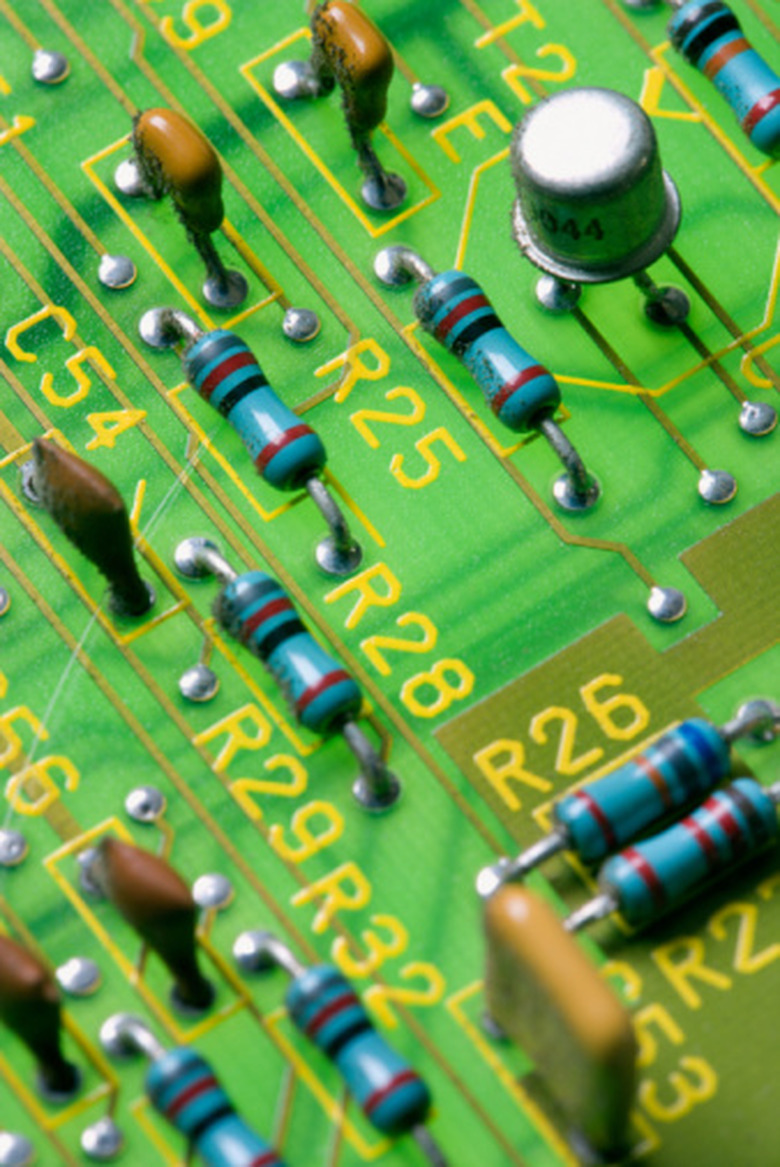How To Find Voltage & Current Across A Circuit In Series & In Parallel
Electricity is the flow of electrons, and voltage is the pressure that is pushing the electrons. Current is the amount of electrons flowing past a point in a second. Resistance is the opposition to the flow of electrons. These quantities are related by Ohm's law, which says voltage = current times resistance. Different things happen to voltage and current when the components of a circuit are in series or in parallel. These differences are explainable in terms of Ohm's law.
Step 1
Measure voltage without isolating the components. Voltage is the easiest thing to measure with a multimeter. To measure resistance of a component, you must turn off the power and take the component out of the circuit. To measure a current you must put the meter in the circuit, which means cutting a wire to insert the meter. Measuring voltage is as easy as placing the meter probes at two points and reading the meter that indicates the voltage difference between the two points. Often you can use the relatively easy voltage reading to indirectly find the current. If the resistance of a component is known, measuring the voltage allows you to compute the current, because current = voltage divided by resistance.
Step 2
See how the voltage drops across each component in proportion to the resistance of the component in a series circuit. The current is obviously the same through each component — there is only one path for the electricity, so it is the same everywhere. If a 12-volt battery is connected to three 100 ohm resistors in series, the total resistance is 300 and the current flowing through all three resistors is 12/300 or 0.04 amps or 40 milliamps. If there is an 80 ohm resistor and two 40 ohm resistors in series, the total resistance is 80 + 40 + 40 = 160 ohms and the current through all three resistors is 12/160, or 75 milliamps.
Step 3
Look at how the roles of voltage and current change places in parallel circuits. In series circuits, the current is the same through each component and the voltage can be different in each component. In parallel circuits, the voltage is the same across each branch and the current splits up so that the current can be different through each branch. In parallel circuits, the flow through each branch of the circuit is proportional to the resistance of the branch. The larger the resistance, the smaller the current flowing through the branch.
TL;DR (Too Long; Didn't Read)
To get an accurate resistance reading, you must zero adjust an ohmmeter each time it is used. With the leads together, turn the zero adjust knob until the meter reads zero.
Warning
Resistor values are only roughly what is marked. If the last of the colored bands is gold, the accuracy is 5 percent; If the last band is silver, the tolerance is 10 percent; and if there is no metallic bend, the tolerance is 20 percent. If you are computing current using Ohm's law, this tolerance carries over in your computation.
Cite This Article
MLA
Mano, Carlos. "How To Find Voltage & Current Across A Circuit In Series & In Parallel" sciencing.com, https://www.sciencing.com/voltage-across-circuit-series-parallel-8549523/. 24 April 2017.
APA
Mano, Carlos. (2017, April 24). How To Find Voltage & Current Across A Circuit In Series & In Parallel. sciencing.com. Retrieved from https://www.sciencing.com/voltage-across-circuit-series-parallel-8549523/
Chicago
Mano, Carlos. How To Find Voltage & Current Across A Circuit In Series & In Parallel last modified March 24, 2022. https://www.sciencing.com/voltage-across-circuit-series-parallel-8549523/
